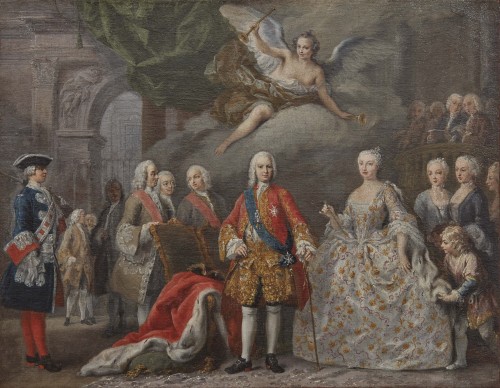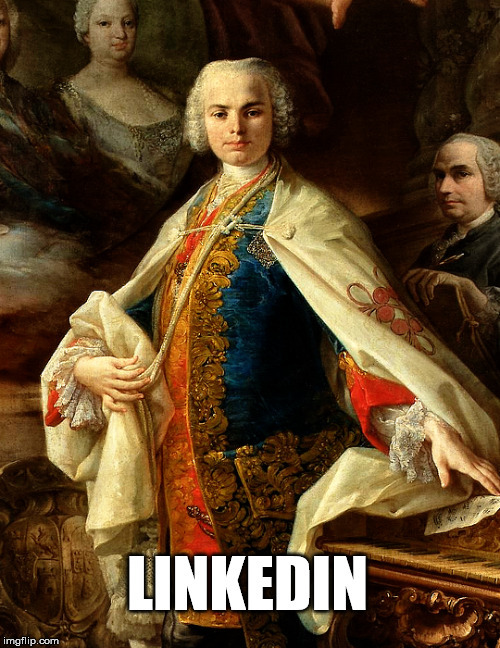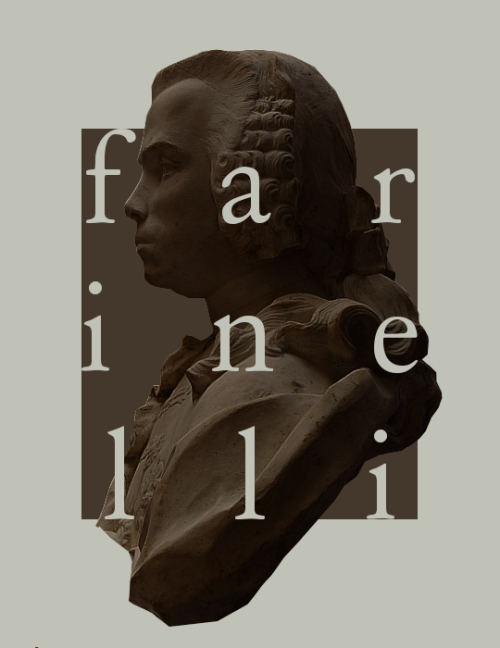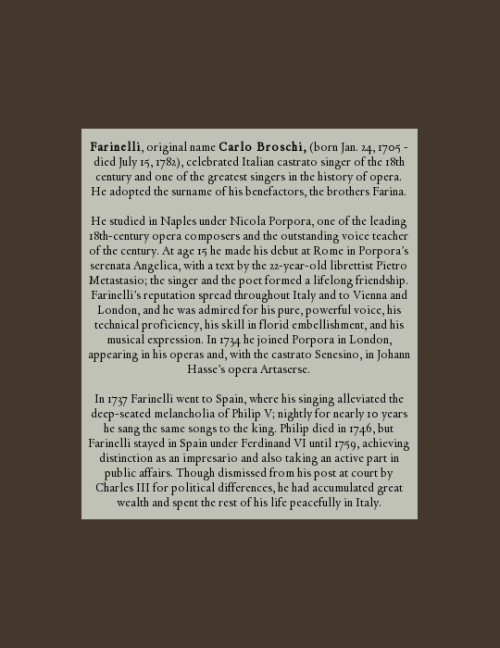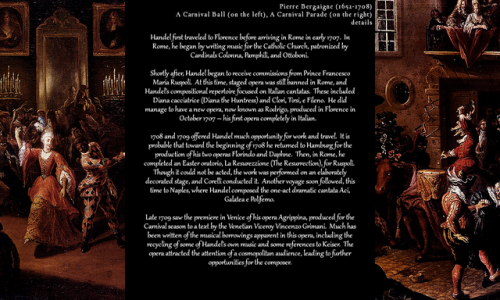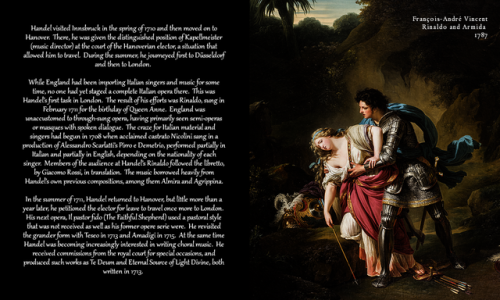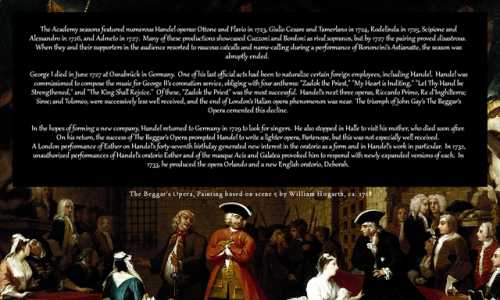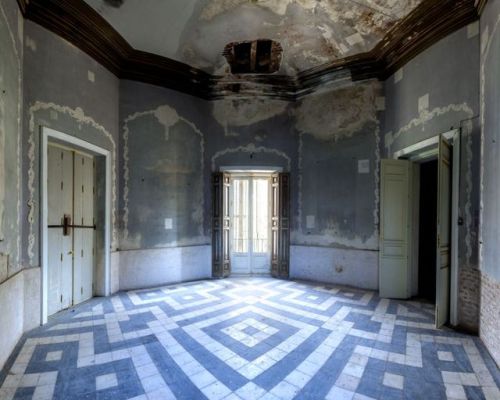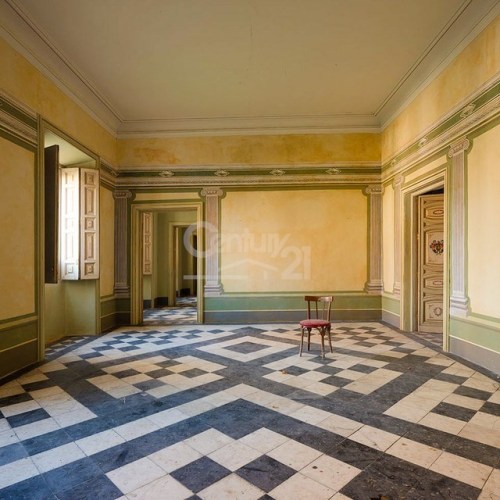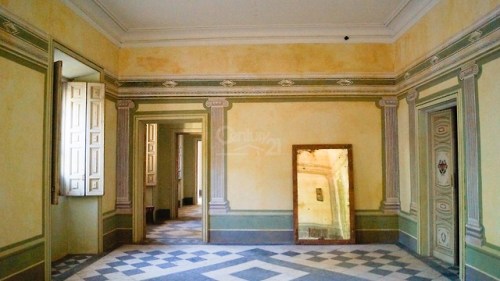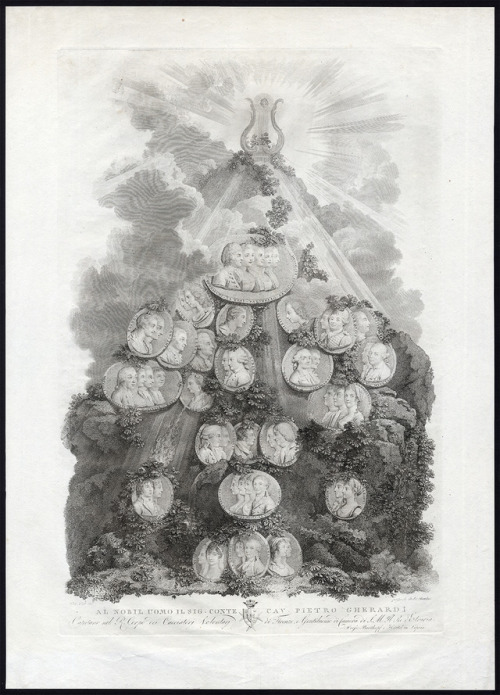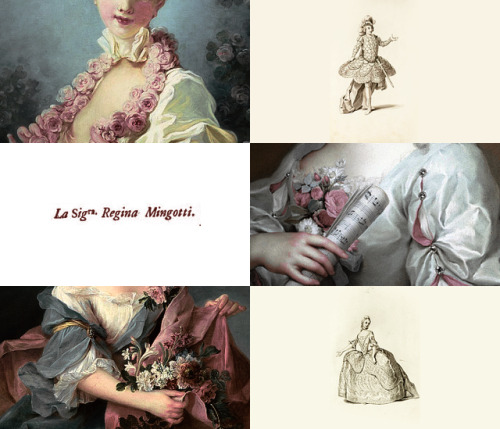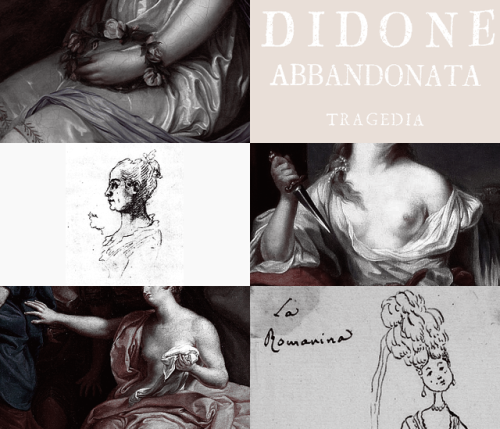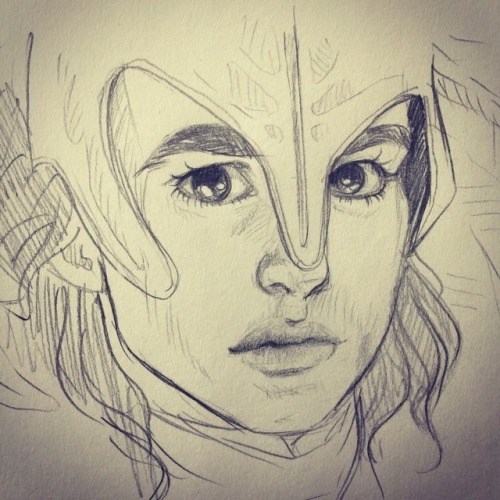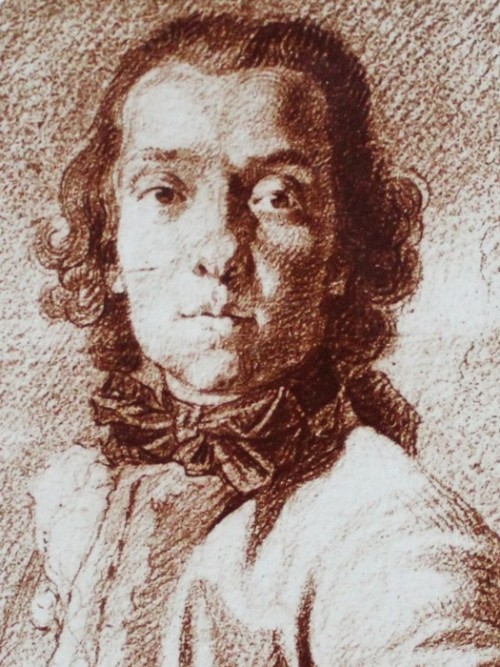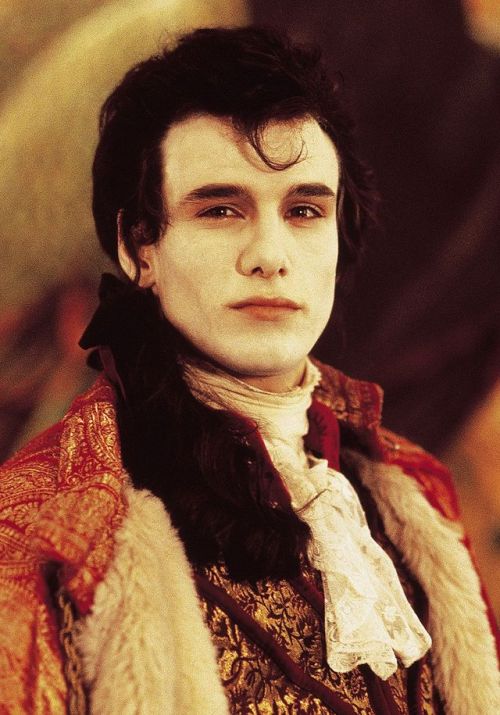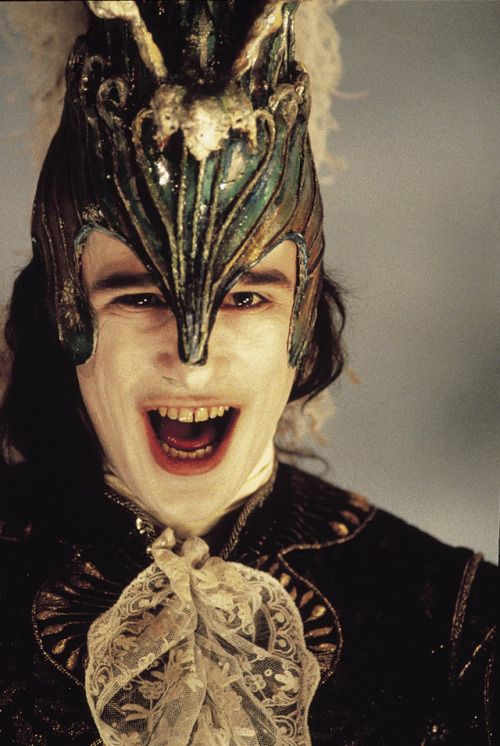#farinelli
Jacopo Amigoni (Napoli, 1682 – Madrid, 1752)
FERDINANDO VI DI BORBONE AND BARBARA DI BRAGANZA WITH THE COURT (including Farinelli and Scarlatti on the balcony)
oil on canvas, cm 46,5x61
source:https://www.pandolfini.it/it/asta-0338/jacopo-amigoni.asp
Post link
Blue: Peace, tranquility, cold, calm, stability, harmony, unity, trust, truth, confidence, conservatism, security, cleanliness, order, loyalty, sky, water, technology, depression, appetite suppressant.
Post link
Carlo Maria Michelangelo Nicola Broschi (better known as Farinelli) was castrated at the age of 12 in order to preserve his pure and beautiful singing voice. Castrati were at the height of popularity during his lifetime, and Farinelli was the most famous opera singer of the 18th century.
Using inferences drawn from the paintings and busts that exist of him, along with the more recent discoveries made after exhuming his bones, I’ve made something of a facial reconstruction.
Giving new life to ancient faces is really satisfying and interesting to me, so this may eventually become a series. <3
For Commission Info, go HERE
buy me a ko-fi?
(and if you haven’t heard enough useless art history trivia, hit me up.)
Post link
The Osuna Palace in Aranjuez
The Osuna Palace in Aranjuez is a neoclassical building that was built in 1751 for Italian artist Carlo Maria Michelangelo Nicola Broschi. He was better known under his stage name Farinelli. The palace was built by the architect Giacomo Bonavia who also created the royal palace ‘Palacio Real de Aranjuez’. After Farinelli’s banishment from the Spanish court the building became the property of the Crown for twenty years. Then it was aquired byt the IX duke of Osuna. It remained in the hands of the dukes of Osuna until Mariano Téllez-Girón, XII Duke of Osuna, who doomed to ruin, had to sell it.
In May 2018 there was a huge fire at the palace. The intense fire caused the roof to collapse. Eight fire crews were trying to prevent the flames spreading to neighbouring properties. The palace itself was lost.
Sources (+ more pictures): XXX
Post link
Chanteurs célèbres du XVIIIe siècle et début du XIXe siècle avec chanteurs comme la contralto Vittoria Tesi et les castrati Farinelli, Caffarelli, Gizziello et Carestini par Antonio Fedi (ca. 1800).
Famous singers of 18th and early 19th centuries, with singers such as the alto Vittoria Tesi and the castrati Farinelli, Caffarelli, Gizziello and Carestini by Antonio Fedi (ca. 1800).
Post link
I send you a Canzonetta on the departure of Nice. You will find it very tender, but do not wrong me so far as to suppose me in love. You know whether I am capable of such imbecility.Pietronelli modern au
Post link
Giuseppe Maria Crespi - portrait of Charles Hanbury Williams, c. 1725
The painting, evident international taste, has long been considered the portrait of Carlo Broschi, the famous Farinello, soprano and Bolognese origin who returned home only in advanced years. Though it is a typically aristocratic portrait and elegantly finished, it has the same expressive force as Crespi’s popular portrayal, an indication of the artist’s ability to maintain his natural style by approaching an aulic subject.
For comparision: Charles Hanbury Williams by Anton Raphael Mengs
Post link
Co-stars & Rivals: CATERINA REGINA MINGOTTI
- Born: Naples, 16 Feb 1722
- Died: Neuburg an der Donau, 1 Oct 1808
- Voice:soprano
- Personality: Regina Mingotti was an Italo-German singer. Her early life is known almost wholly from her account to Burney in 1772, which is inaccurate in at least one important respect. According to this, she was the daughter of a German officer in the Austrian service at Naples and was educated in a convent at Grätz in Silesia. She attributed her firm intonation to the abbess, who made her practise scales without keyboard accompaniment. According to Prota-Giurleo she was the sister of the composer Michelangelo Valentini, hence presumably Italian, and may have had an early, undocumented Italian career. Her first recorded appearances were in Hamburg from 1743 to 1747, as a leading member of a notable company run by the impresario Pietro Mingotti, whom she married but soon parted from. She scored an immediate success in Dresden (1747), where she was kept on by the Saxon court and studied with Porpora. She sang in Naples, Prague, Madrid, Paris and London, where she took over the management of the Kings Theatre together with the leader of the orchestra, Felice Giardini, and incurred much obloquy. Her retirement was spent at Dresden, then Munich, and finally Neuburg, where her son Samuel von Buckingham was inspector of forests; he was apparently born (in London) of a liaison with a Piedmontese nobleman. Burney called her perfect mistress of her art, always grand in her style though lacking in grace and softness; her practical musical intelligence, he wrote, was equal to that of any composer he had known. She was admired as an actress, particularly in the breeches roles she often sang.Her portrait in crayons, by Mengs, is in the Dresden Gallery. It represents her, when young, with a piece of music in her hand; and, if faithful, it makes her more nearly beautiful than it was easy for those who knew her later in life to believe her ever to have been. ‘She is painted in youth, plumpness, and with a very expressive countenance.’
- One fact: In 1751 Mingotti went to Spain, where she sang with Gizziello in the operas directed by Farinelli, who was so strict a disciplinarian that he would not allow her to sing anywhere but at the Opera, nor even to practise in a room that looked on the street.
- One quote: ‘She spoke three languages, German, French, and Italian, so well that it was difficult to say which of them was her own. English she likewise spoke, and Spanish, well enough to converse in them, and understood Latin; but, in the three languages first mentioned, she was truly eloquent.’ Charles Burney
- One hit:Ah, se provar mi vuoi (Attilio Regolo)
Post link
Co-stars & Rivals: ANTONIO MARIA BERNACCHI
- Born: 23 June 1685
- Died: 1 March 1756
- Voice:alto
- Personality: Antonio Maria Bernacchi was an Italian castrato, composer, and teacher of singing. He studied with Francesco Antonio Pistocchi. His pupils included Farinelli, for a brief period during 1727, and the tenor Anton Raaff. Nowadays Bernacchi is best remembered for his association with the composer George Frideric Handel, in six of whose operas he sang. Bernacchi began his operatic career in Genoa in 1703. His appointment in 1714 as virtuoso to Prince Antonio Farnese led to widespread recognition throughout Europe, and he performed in operas by various famous composers of the day, including Hasse, Vinci, and Scarlatti. He was an especially frequent visitor to the theatres of Venice, appearing in more than twenty operas in that city between 1712 and 1724. In 1729 Handel took Bernacchi as his primo uomo for the second Royal Academy, in place of the departed Senesino. For Handel, Bernacchi created roles in Lotario (1729) and Partenope (1730). Despite his fine European reputation, Bernacchi’s success in England was mixed: though Charles Burney praised his intelligence as a singer, English audiences preferred Senesino. Though his natural musical gifts were not exceptional, he was renowned for technical virtuosity, especially in ornaments and cadenzas. He was accused of sacrificing expression to execution and adopting an instrumental style; his old master Pistocchi is said to have exclaimed: “I taught you to sing, and you want to play”. Bernacchi retired from the stage in 1738 and founded a famous singing school at Bologna. He died in 1756 in the city of his birth.
- One fact: In 1727 at Bologna Bernacchi had a contest with the famous Farinelli in a performance of La Fedelta (the later title of Orlandini’sAntigona). Though the younger Farinelli dazzled the audience with an elaborate cadenza, Bernacchi sang an even more higly embellished and polished aria that carried the day. The two castrati were rivals, yet thet become good friends and sang together frequently. Bernacchi taught some of his secrets to Farinelli, and the latter arranged a fine memorial service for his colleague after his death.
- One quote: Bernacchi has a vast compass, his voice mellow and clear, but not so sweet as Senesino, his manner better; his person not so good, for he is as big as a Spanish friar. (Mary Granvile)
- One hit: Dal mio ben che tanto amai (Demetrio)
Post link
Co-stars & Rivals: M A R I A N N A B U L G A R E L L I
- Stage name: La Romanina
- Born:1684
- Died: 26 February 1734
- Voice:soprano
- Personality: Marianna Bulgarelli, also known as Maria Anna Benti, was an Italian soprano of the 18th century. Bulgarelli was born and died in Rome; hence her nickname, “La Romanina.” She was a popular and successful singer of opera seria, renowned for her acting ability in particular. The singer is best remembered as a patron of the youthful Metastasio, whose work she encouraged and helped to develop. At her request Metastasio gave up the law and composed his first melodramma, a lyric tragedy in three acts on the conflict of love and duty, called Didone abbandonata (1723, first performance 1724). In Bulgarelli’s salon Metastasio formed his lifelong friendship with the castrato male soprano Farinelli and came to know such composers as Nicola Porpora (from whom he took music lessons), Domenico Sarro, and Leonardo Vinci, who were later to set his works to music. Meanwhile La Romanina was growing older; she had ceased to sing in public; and the poet felt himself more and more dependent in an irksome sense upon her kindness. In September 1729 he received the offer of the post of court poet to the theater at Vienna. La Romanina unselfishly sped him on his way to glory. She took the charge of his family in Rome; and he set off for Austria. Bulgarelli probably died suddenly upon the road from Rome to Vienna in 1734, after reading Metastasio’s letter that dissuaded her from the projected visit in Austria. All we know is that she left him her fortune after her husband’s life interest in it had expired, and that Metastasio, overwhelmed with grief and remorse, immediately renounced the legacy. This disinterested act plunged the Bulgarelli-Metastasio household at Rome into confusion. La Romanina’s widower married again. Leopoldo Trapassi, and his father and sister, were thrown upon their own resources.
- One fact: In honour of the birthday of the Empress of Austria, Metastasio composed Gli orti esperidi (1721), but kept his authorship secret. Gli orti esperidi, which was set to music by Nicola Porpora, and sung by Porpora’s pupil, the castrato Farinelli, won the most enthusiastic applause. The Roman prima donna, Marianna Bulgarelli, who played Venus in this serenata, spared no pains until she had discovered its author. and soon became enamoured of the poet.
- One quote: La Romanina was a great actress, and Metastasio himself learned from her the most admirable theatrical situations, such as that of jealousy in scenes XIV and XV of the second act of Didone, which weer entirely the invention of the singer (Saverio Mattei)
- One hit: Son fra l'onde in mezzo al mare (Gli orti esperidi)
Post link
Co-stars & Rivals: V I T T O R I A T E S I
- Stage name: La Moretta, La Fiorentina
- Born:Florence, 13 Feb 1700
- Died:Vienna, 9 May 1775
- Voice:contralto
- Personality:Vittoria Tesi was an Italian opera singer and music teacher of the 18th century, endowed by nature with a strong, masculine contralto voice thus she created many travesti parts, In 1738 she refused for a time to sing any more of them on the grunds that ‘acting a male part is bad for her health’. Her operatic career began with performances at Parma and Bologna in 1716. By 1718 she was virtuosa di camera for the Prince of Parma at Venice. The following year she was at Dresden, singing for Antonio Lotti alongside Senesino and Margherita Durastanti, where she performed arias which are generally set for basses. By 1721 she was back in Italy for the Florentine Carnival, and for the next 26 years travelled Europe, with performances in Madrid and possibly Frankfurt. Italy, however, was the nation where she spent most of her time, dividing the years between its various cities. In 1725 in Naples, together with Farinelli, she premiered Hasse’s serenata Marc'Antonio e Cleopatra. Her career peaked in the late 1730s and 1740s, when she sang alongside such singers as Caffarelli; in 1744 she took the title role in Gluck’s Ipermestra and did the same in 1748 in his Semiramide riconosciuta, set to a libretto by Metastasio. This performance persuaded Metastasio of her merits, although previously he had been unenthusiastic, calling her a “grandissima nullità”. After successful performances in Niccolò Jommelli’s Achille in SciroandDidone abbandonata (1749), both set to Metastasian libretti, Tesi began to retire from the stage. In 1751 she became costume director at the Viennese court, where she remained for many years, teaching music as a particular favourite of Countess Maria Theresia Ahlefeldt. Among her pupils were Caterina Gabrielli and Elisabeth Teyber, and she is known to have met not only Casanova but also Mozart and his father.
- One fact: Tesi is said tomarry a simple Italian guy, in order to fend off the advances of an undesired nobleman (according to Burney her husband was a “poor journeyman baker” who was picked off the street and paid fifty ducats for marrying the singer, “not with a view to their cohabiting together”.)
- One quote: “She was perhaps the first actress who acted well while singing badly"(Sarah Goudar)
- One hit:Attendi ad amarmi (Marc'Antonio e Cleopatra)
Post link
Farinelli’s favorite foods were macaroni and chocolate. I’m crying.
Une caricature de Farinelli dans le rôle d'une femme [A caricature of Farinelli in female role]
(Pier Leone Ghezzi, 1724)
Post link
Co-stars & Rivals: A N N A G I R Ò
- Born:Mantua, c1710
- Died:after 1747
- Voice:contralto
- Personality: Anna Girò is known above all for her professional association with Antonio Vivaldi - a relationship suspected, at the time, of carrying over into their private lives, although modern research suggests the opposite. Anna’s father was a wig-maker of French extraction. The singer’s actual name was Teseire – Italianized to Tessieri – whereas Giro was a sobriquet her father had used. About 1722 she went to Venice to study singing, living with an elder half-sister, Paolina, who acted as her chaperone. She made her operatic début in Treviso in autumn 1723; her first appearance on the Venetian stage was in Albinoni’sLaodice (autumn 1724). Giro sang in over 50 operatic productions. She started, in her early teens, with minor travesty roles, then graduated to seconda donna and soon also to prima donna roles. Vivaldi, for whom she sang (nearly always as prima donna) in over 30 productions from 1726 to 1739, appears to have been her principal mentor. He once declared, with evident exaggeration, that he could not put on an opera without her, but she was well able to operate independently of him, as she proved during his transalpine tour of 1729 - 31 (when Giro was performing alongside Farinelli in Broschi’s Ezio and Porpora’s Poro) and again after his death in 1741. Her very successful career lasted until 1748, when, after singing in Piacenza at Carnival, she married a widowed count from that city, Antonio Maria Zanardi Landi, and retired honourably from the stage.
- One fact: The amendments to the libretto of Zeno’sGriselda that Vivaldi instructed Goldoni to make in 1735 were designed to hide her defects and promote her strengths.
- One quote: She was not pretty, but she had charms, a very slim waist, beautiful eyes, lovely hair, a charming mouth, and a small voice, but a great deal of acting ability. (Carlo Goldoni)
- One hit: Svena, uccidi, abbatti, atterra (Bajazet)
Post link
Farinelli in an advanced age - portrait by Corrado Giaquinto, Museo Diocesano, Molfetta (not sure about the date though)
‘Mister Farinelli still lives and is in good health and spirits. I found him much younger in appearance than I expected. He is extremely tall and thin and has a youthful air and he seems by no means infirm’ (Charels Burney, 1773)
Post link

I found this small, unobtrusive painting while looking through Collection of Fine Arts Museums of San Francisco. The work is said to be executed around 1740 - 1745, and is attributed to Pietro Longhi - a Venetian painter, who mastered the portrayal of scenes of everyday Venetian life.
This picture depicts such of those scenes – in the dimly lit room a group of people enjoys themselves with music (yes, to me it looks more like a casual afternoon music session than a tutelage). The central part of the picture presents a lady (a young girl?) and a gentleman, both clad more glamorous than the other two sitters, and more visible because of the light that falls directly on them. Behind the pair stands the man in the long wig with the violin in his hands, while in the margin of the picture, by the harpsichord we can observe another person, lurking at us from a deep shadow – the only one element that creates some kind of tension. From the ceiling, placed right beetwen the Shadowman and the Harpsichordist, the cage with the trapped bird is hanged…
Without doubt, the main character of the scene is a young - looking man playing harpsichord – who appears to be quite tall even while sitting, and his half-opened, dark eyes glance at the lady by his side, but there is nothing threatening nor sexual in that stare…The musician stature, the pose, the fashionable wig, the blue color of his coat decorated with gold, and mostly the soft face with the dark, thick eyebrows and slightly absent look in the eyes – all that reminds me too much of Farinelli! Of course this could be just a coincidence, but if you compare Jacopo Amigoni’s portrayals of the singer to the mysterious musician from the Longhi’s work,…
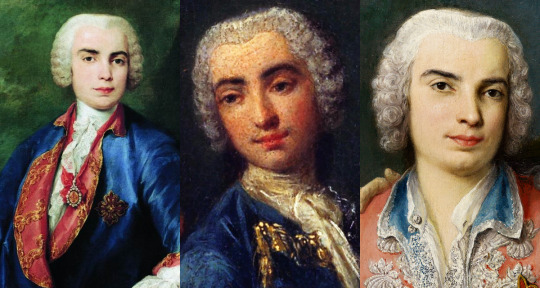
…It tells much!
And there is also the pose – it is almost a faithful copy of Farinelli’s legs setting in the most famous picture of him, showing the singer gathered with his friends in the Spanish garden in 1750. Farinelli sits in a similar way in the earlier picture from 1735 as well.
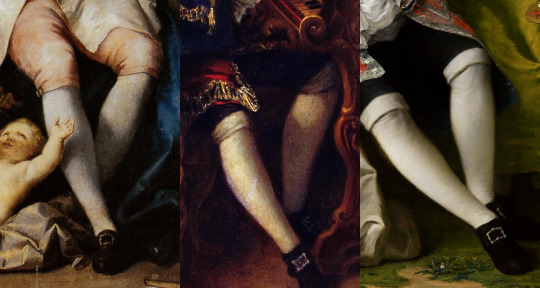
If it’s not enough the harpsichord player wears a ring on his little finger. The one appears also on Carlo Broschi’s hand in another of Amigoni’s paintings done in 1750. And finally, the harpsichord! The very similar looking instrument Farinelli touches in the Bartolomeo Nazari’s image, created in Venice in 1734. Both paintings have also a second common element - the dog - an animal that Carlo clearly loved and kept in his household for all of his life.
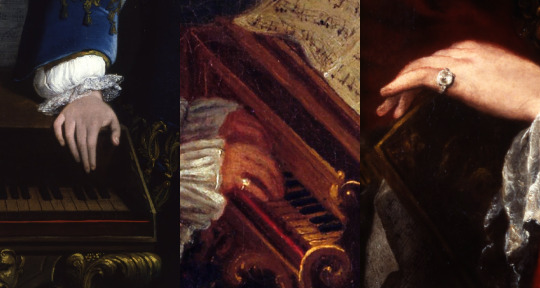
Of course, the date of the picture doesn’t fit, but this could be just a mistake of someone who did the inventory. The painting is described as made during the 1740s. Farinelli was at the Spanish court then and stayed there until 1759, while Longhi (according to the informations I could find) left Venice only once, in his younger years, to become an apprentice of the Bolognese painter Giuseppe Maria Crespi. It was before 1732. But…if we examine the biography of Broschi’s boys – both Carlo and Riccardo were staying in Bologna during that time. Could they possibly acquainted Longhi then?
Another, and more possible scenario is, that the painter met them after his return to Venice in 1732, and before Farinelli’s departure to England in 1734. Longhi was not a well-known artist yet, but he turned his attention to the genre painting in 1730s, so portraying the famous castrato around 1734 could be possible! The violinist also looks strangely similar to Thomas Osborne, duke of Leeds, who was a music lover and a crazy Farinello groupie (minus the sexual content!), who attented all of the castrato’s performances while he was in Italy.
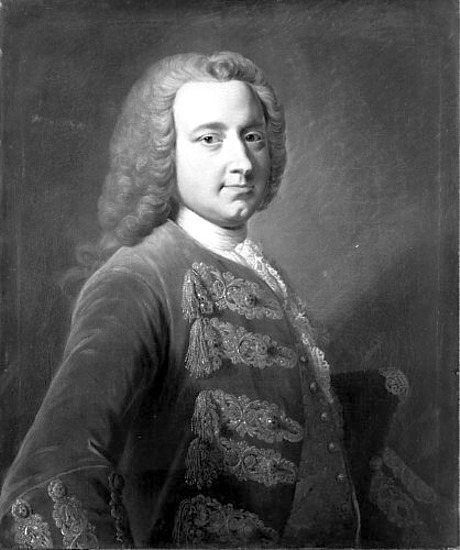
Both men soon became friends, so could this picture be commisioned by the Duke? Maybe the aristocrat was a host of a private music party, during which the castrato performed before the English visitors (the lady looks very English if you ask me)? Or maybe he was Farinelli’s guest in Venice? There is a chest or a suitcase lying in the corner of the picture, with the music scores on it. It gaves the feeling that the musician is a visitor or a traveller (both terms matching the status of the big opera star), but it also reminds me strongly of the term suitcase arias…The text written on the sheets is very hard to read, this could be a signature of the painter, but the arrangement of the letters looks a little like a fragment taken from one of those Farinelli’s suticase arias called “Cervo in Bosco” (in bosco se l’imipiaga), used in the operas Medo and Catone in Utica. The latter one performed in…Venice.

What about the Shadowman then? This could be no other than Riccardo Broschi, one of those who were responsible of turning Carlo Broschi into a human nightingale Farinelli…And thus always living in his castrated brother’s shadow…
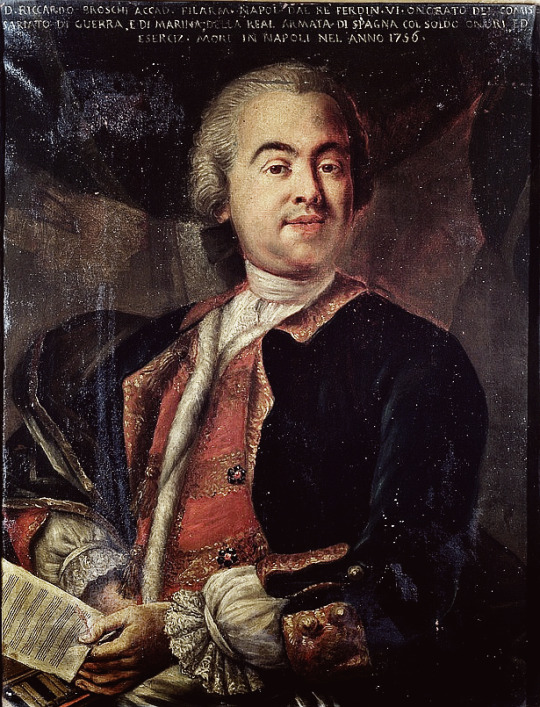
The brief history of Castrati - part three (part one,part two)
Serious opera in the first two-thirds or so of the 18th century was dominated by a succession of famous castratos, of whom Nicolo Grimaldi (’Nicolini’), Antonio Maria Bernacchi, Francesco Bernardi (’Senesino’), Carlo Broschi (’Farinelli’), Giovanni Carestini, Gaetano Majorano (’Caffarelli’) and Gaetano Guadagni are only the best known. Such artists could command engagements in one European capital after another at unprecedented fees - in Turin the primo uomo’s fee for the carnival season was sometimes equal to the annual salary of the prime minister - while they also kept, as insurance, permanent appointments in a monarch’s chapel choir or a cathedral, and some of them performed there regularly.
Their achievements are now difficult to gauge. Their command of vocal agility - of trills, runs and ornamentation, especially in the da capo section of an aria was clearly central to their success. So, at least for some, was a phenomenally wide range: Farinelli is said to have commanded more than three octaves (from c to d’“), others more than two, though, like some modern sopranos and tenors, they were apt to lose the upper part of their range as their careers wore on. It would, however, be a mistake to regard leading castratos as vocal acrobats and no more. Command of pathetic singing - soft, laden with emotion, powered by controlled devices such as messa di voce - was highly regarded: it was, for instance, central to the reputation of Gasparo Pacchiarotti. Nor was acting ability ignored: Guadagni’s performance as Gluck’s original Orpheus was thought deeply affecting. The issue is clouded by the habit of commentators through most of the 18th century of bemoaning the supposed decadence of opera through an excessive cult of vocalism and ornamentation. This was in part a literary convention. The cult flourished, and was in practice forwarded by some of those who decried it.
Another contemporary habit that needs to be guarded against is that of mocking the castratos as grotesque, extravagant, inordinately vain near-monsters. This was in part a nervous reaction against a phenomenon experienced as sexually threatening twice over: the fact of castration was disconcerting in itself, yet according to legend (held by most modern medical opinion to be baseless, though perpetuated, along with much traditional obfuscation, in the 1995 film Farinelli) castratos could perform sexually all the better for the loss of generative power. In part the mockery visited upon castratos was roused by highly paid star singers in general, among whom they were the most prominent. Because of their musical education they often did well as teachers; some who had also had a general education acted in retirement, or even during their singing careers, as antiquarian, booksellers, diplomats, or officials in royal households.
Post link

